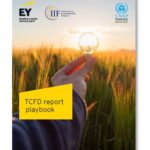Numerous financial institutions have started installing environmental management systems. In ISO terms, such companies need to show continuous improvement of both their environmental management system and the environmental performance of their business processes. A better understanding of what and how is to be measured in financial institutions is therefore essential for performance assessment and reporting.
Between autumn 1999 and autumn 2000, a group of 11 financial service institutions with headquarters in Germany and Switzerland, consulted by E2 Management Consulting AG, developed the EPI-Finance 2000 report, which contains a set of Environmental Performance Indicators for the financial industry. The indicators are divided into four business sectors (see figure below). In the foreword, UNEP and WBCSD welcome the report as it "will help build a full picture of a companys sustainability performance, which will allow for effective management decision-making and stakeholder interaction, as well as meaningful benchmarking".
The project applies the new environmental performance evaluation standard ISO 14031 as a guideline. It proposes a set of indicators for financial institutions displaying:
a) the performance of their environmental management system, based on three management indicators (MPI, describing the system’s "drivers").
b) the environmental performance of their financial services, based on two operational performance indicators (OPI, describing the "results")
EPI-Finance 2000: Overview of Environmental Performance Indicators for Financial Institutions
The indicators may primarily be used internally enabling management to measure the development of environmental management. Simultaneously, they may also serve as the basis for a credible external environmental communication. Indicator data have to be supplemented with comments, especially regarding the specific definition of business sectors and the environmental management approach.
The report contains both the definitions of the indicators as well as examples from the participating institutions. Members of the working group were: Bank Sarasin, Credit Suisse Group, Deutsche Bank, Gerling Konzern, HypoVereinsbank, RheinLand Versicherungen, SAMSustainabilityGroup, Swiss Re, UBS, Victoria Versicherungen, Zürcher Kantonalbank and E2 Management Consulting. Links to these institutions as well as to their indicator examples, where available, can be found here.
The editors invite other financial institutions to critically assess and apply these indicators. This will allow for the improvement of EPI-Finance on the basis of broader experience.



